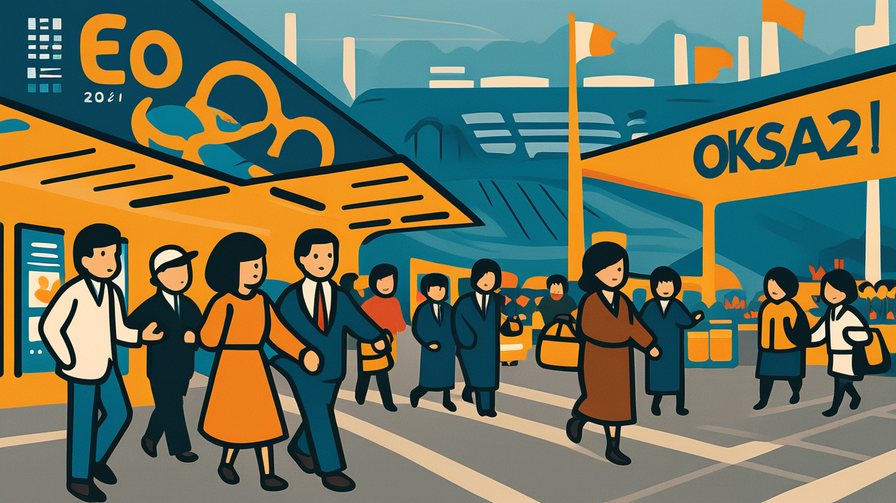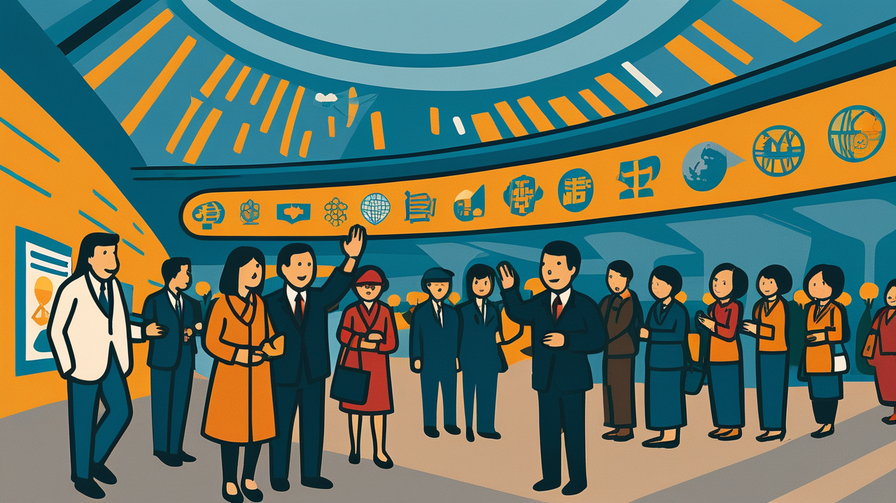[Disclaimer] This article is reconstructed based on information from external sources. Please verify the original source before referring to this content.
News Summary
The following content was published online. A translated summary is presented below. See the source for details.
The US is sending some seriously important people to Japan for something called Expo 2025 Osaka – think of it as the world’s biggest show-and-tell where countries flex their coolest tech and culture. On July 19th, which is USA National Day at the Expo, Treasury Secretary Scott Bessent will lead a group that includes the US Ambassador to Japan, the Labor Secretary, and other high-ranking officials. They’re going to check out the USA Pavilion, which has already had about a million visitors since the Expo opened in April. The American section focuses on space exploration, innovation, and opportunities for student exchanges – basically showing off all the cool stuff America does. This Expo is huge – they’re expecting 28 million visitors by the time it ends in October! The whole point is to strengthen relationships with Asian countries and show that America is committed to working with the Indo-Pacific region. It’s like when your school hosts an international day, but imagine if every country spent millions of dollars on their booth and government officials actually showed up.
Source: state.gov-Collected Department Releases
Our Commentary
Background and Context

World Expos (also called World’s Fairs) are like the Olympics of innovation and culture – they happen every few years and countries compete to host them. Expo 2025 Osaka is especially important because it’s the first major Expo since COVID, and everyone’s eager to show they’re back and better than ever. These events have a crazy history – the Eiffel Tower was built for the 1889 Paris Expo, and the Space Needle in Seattle was built for the 1962 World’s Fair. Japan won the right to host this Expo by promising to focus on “Designing Future Society for Our Lives” – basically asking how we can use technology to make life better for everyone. Countries spend millions building pavilions (fancy exhibition spaces) to show off their best stuff.
Expert Analysis
Diplomacy experts say sending such high-level officials shows America is serious about its relationships in Asia. The Indo-Pacific region (Asia and the Pacific Ocean area) is super important for the global economy – it’s where most of the world’s computer chips are made, where the busiest shipping routes are, and where over half the world’s population lives. By sending the Treasury Secretary (who handles America’s money stuff), America is signaling that economic partnerships with Asian countries are a top priority. This is especially important as countries compete for influence in the region. The focus on student exchanges in the USA Pavilion is smart too – it’s about building relationships with young people who will be future leaders.
Additional Data and Fact Reinforcement
Let’s talk numbers: Expo 2025 is expected to generate about $18 billion in economic impact for Japan. The USA Pavilion alone cost around $60 million to build. With 28 million expected visitors over 6 months, that’s like the entire population of Texas visiting one place! Previous Expos have introduced world-changing innovations – the telephone was demonstrated at the 1876 Philadelphia Expo, and the Ferris wheel debuted at the 1893 Chicago World’s Fair. Countries see Expos as chances to rebrand themselves – South Korea used Expo 2012 to show it was more than just Samsung and K-pop. The USA Pavilion hitting 1 million visitors already means it’s on track to be one of the most visited pavilions.
Related News
This Expo is happening while there’s lots of competition between countries for influence in Asia. China has its own massive pavilion focusing on green technology and AI. The timing is interesting too – it’s right after the G7 summit where world leaders discussed economic cooperation. Other countries are using the Expo to announce major initiatives – Germany is showcasing renewable energy tech, while Singapore is demonstrating smart city solutions. Some smaller countries are using it as their chance to attract tourism and investment. The Expo is also testing new technologies like real-time translation devices and robot guides, making it a preview of future tech we might all use.
Summary

The US sending top officials to Expo 2025 Osaka is about way more than just attending a fancy fair. It’s a strategic move to strengthen America’s position in Asia, showcase innovation, and build connections with millions of visitors from around the world. For young people interested in technology, international relations, or just cool exhibitions, this Expo represents what global cooperation can look like when countries compete through creativity instead of conflict.
Public Reaction
Japanese social media is excited about the VIP visits, with many hoping to catch glimpses of the American delegation. Some Americans living in Japan are proud to see their country taking the Expo seriously. Critics point out the contrast between spending millions on pavilions while both countries have domestic issues. Young Japanese visitors have been posting tons of photos from the USA Pavilion, especially the space exploration exhibits. Some people are comparing pavilions like it’s a competition – “Korea’s pavilion has better food but America’s has cooler tech.” Environmental activists are watching to see if countries’ Expo promises about sustainability match their actual policies. Travel influencers are treating it like the ultimate content opportunity.
Frequently Asked Questions
Q: What exactly is a World Expo?
A: It’s like a massive international festival where countries build temporary “pavilions” to show off their culture, technology, and vision for the future. Think of it as each country getting to create their own Disney World attraction for six months.
Q: Why should teens care about this?
A: Expos often preview technology you’ll be using in 5-10 years. Plus, many offer student programs, internships, and cultural exchanges. If you’re interested in international careers, attending or working at an Expo looks amazing on college applications.
Q: Can regular people visit these Expos?
A: Absolutely! Anyone can buy tickets (usually $20-50). Many young people plan trips around Expos because you can experience dozens of countries’ cultures in one place. It’s like studying abroad without leaving one city.


